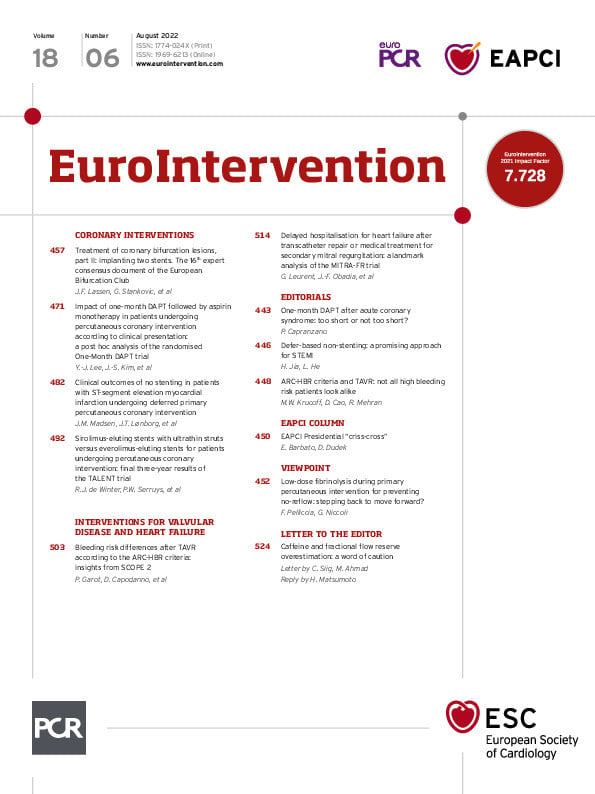We write in response to Tanaka et al with interest regarding their recent paper: “Linear concentration-response relationship of serum caffeine with adenosine-induced fractional flow reserve overestimation: a comparison with papaverine”1. This paper concludes that serum caffeine overestimates adenosine-induced fractional flow reserve (FFRADN), highlighting the need for standardised control of caffeine prior to FFR measurement. The consensus states that standardisation criteria are vitally important for fair clinical practice, though we caution against drawing early conclusions in defining these criteria made for the general population.
Kasumi et al outline their reference standards in Japanese patients: intravenous adenosine triphosphate infusion at 150 µg/kg/min (IVATP150) and 210 µg/kg/min (IVATP210), and intracoronary administration of nicorandil 2 mg (ICNIC2 mg) induces hyperaemia2. Of 216 lesions, findings suggest no significant difference in the FFR values between caffeine and non-caffeine groups following ICNIC2 mg and IVATP210. Regardless of the time interval (<12 hrs, 12-24 hrs, and 24-48 hrs) between caffeine intake and catheterisation after IVATP150 and ICNIC2 mg, and IVATP210 and ICNIC2 mg, changes in FFR are independently affected. This suggests that caffeine abstention is not clinically required for accurate FFR measurement and stands against caffeine control for FFR measurement.
Caffeine is known to antagonise four subtypes of adenosine G-protein-coupled receptors (GPCRs). Using Gaussian accelerated molecular dynamics (GaMD), Hung et al show that caffeine binds to and dissociates from human adenosine A2A receptors (A2AAR) with high consistency3. Although this paper aims to elucidate new targets for drug design, the results suggest that caffeine acts on the same receptors as adenosine. Thus, caffeine intake may lead to an underestimation of FFRADN. This study shows caffeine as having a complex mechanism of action: the validity of standardised criteria for caffeine control prior to FFR measurement will be misconstrued without a thorough understanding of caffeine’s pharmacokinetic properties.
Lassen et al investigate the relationship between gender differences and caffeine in adenosine-induced hyperaemia4. They find that men exhibit a haemodynamic response to caffeine consumption at a lower plasma caffeine concentration compared with women: 1.2 mg/L in men vs 7.4 mg/L in women. Moreover, caffeine is shown to reduce stress myocardial blood flow and myocardial flow reserve assessments in men alone. This difference suggests that men are significantly more sensitive to caffeine than women, adding further complexity to the standardisation of FFR measurement. At the very least, standardisation criteria should incorporate gender differences.
In summary, we present several studies that investigate the relationship between caffeine and FFR; they are evidence of an evolving picture on the issue and encourage a tempered approach towards the identification of standardised criteria on caffeine intake prior to FFR measurement. Assurance of sound scientific methodology is especially important for clinical practice in a general population – gender differences alone have profound implications for clinical practice.
Conflict of interest statement
The authors have no conflicts of interest to declare.
Supplementary data
To read the full content of this article, please download the PDF.

